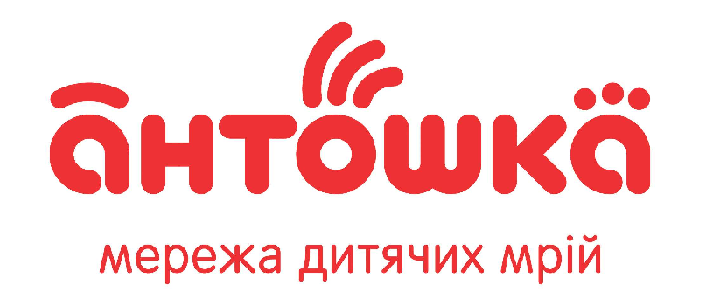
How to Create Viral Education: 8 Tips for E-Learning Professionals
The trick in creating viral educational content is to break the rules: abandon traditional teaching methods and replace them with new approaches.
First, let’s make it clear what viral education is. Many people are familiar with the concept of viral marketing. This way of advertising uses various marketing techniques that arouse in people the desire to disseminate what they hear among their friends, to create a word of mouth. YouTube is the most striking example of virality. One person watched a cool video, he liked it, then shared a link with his friends, the friends shared it with their acquaintances and a whole chain was launched.
The same is true for viral learning. You decided to train employees, assembled a test group, and they liked it so much that they told their colleagues about it. Now your entire office is being trained.
But viral learning is not so easy to create. We have prepared some tips that you can use to spread the culture of learning in your organization:
1. Take Corporate Values and Culture into Account
Make sure that the training process is based on the corporate values and culture of your company. They are the thread that bind together all employees, motivate them to develop and create a favorable environment for the spread of viral education. Use corporate culture as the main idea in all educational materials. Train your employees not only to improve their skills, but also to reinforce team spirit. Show how important it is to be a team player.
Here is an example:
Our customer KNESS Group uses the Collaborator portal to maintain and develop their corporate culture. All information about the company, team, mission, internal rules and guides that every employee is supposed to know is published in the public domain in the Knowledge Base. Also in the Knowledge Base there are photos and videos from various corporate events. Such an approach results in active visiting the training portal and timely delivery of information to each employee.
2. Assemble a Strong L&D Team
L&D (Learning and Development) specialists are responsible for the professional development of each employee. They help to acquire new knowledge, improve skills and realize the labor potential of the company. Assemble a strong L&D team consisting of the best specialists in your company. Indeed, the success of implementing corporate e-learning and further spread of the training culture in the company will depend on their work.
Here is an example:
We have talked with Irina Magaletskaya, head of the Reikartz Hotel Management Training Department at Reikartz Hotel Group. She told us about their team of training superheroes – People R (from Reikartz). Each of the participants has his own super-powers and, at the same time, is as versatile as possible. Training in the company is of the mixed type, so each of the company’s L&D specialists also provides offline trainings and conducts live educational events. It is important for Reikartz, that L&D specialists understand the realities of the hotel and restaurant business, are able to transfer knowledge into the electronic format and have enough patience for editing, checking homework and competent feedbacks.
Each of the specialists has full administrator rights in the LMS. No one gets confused or does the same job as the others and does not interfere with each other. Irina, in the capacity of the leader, coordinates the work of the team and generates new directions for development. The team’s functionality is conditionally divided into: registration of new employees, creation of monthly mini-trainings with news from the network and business, organization and launch of webinars, and internal technical support.
The company is national and the team works remotely, but this does not prevent them from doing their work effectively and supporting each other. At any moment, each of the team members is able to replace his colleague and pick up the work of another person.

Tony Stark of the R-team is the absolute Ironman Eduard Vasilenko (project manager for the development of loyalty programs), who is well-trained in technical and computer skills. Thanks to Eduard, Reikartz involved a bot in the registration process for the online school, organized an online quest to find the hospitality gene, and conducted many online broadcasts of webinars.
The Catwoman is Alina Gakh (specialist in training and adaptation). Alina is always there when exceptional accuracy and precision are needed. When developing new resources, she explores all existing ones, passes them through herself, adds her personal creativity and initiative and gives out really high-quality material. Alina is also responsible for all analytics and statistics.
 Excellent job of extinguishing fires when it is urgently necessary to give out a large amount of materials is performed by Daenerys of the R-team, Irina Club (training and adaptation specialist).
Excellent job of extinguishing fires when it is urgently necessary to give out a large amount of materials is performed by Daenerys of the R-team, Irina Club (training and adaptation specialist).
In addition to the courses for basic training and adaptation, Reikartz also has an academic area of study for cooks, waiters, and receptionists. To organize this part of work, Elena Lifirenko (Deputy Head of the Training Center) comes to rescue. She, like Lara Croft, digs the stone of science from tombs and gives it a modern twist for students.
To develop and test drive their courses, the L&D team involves experts in a certain field. For example, a wine course was created with the participation of the network sommelier. He checked on the relevance of the material and gave a professional assessment.
Each of the R-team members is characterized by initiative, willingness to work and fearlessness. This team of superheroes works 24/7. They are ready to come to rescue at any time and any day of the week.
3. Find Training Ambassadors
Without active participation of employees, you won’t be able to achieve the virality of education. In order to boost the employees’ interest in training, find people who will influence their motivation, certain “authorities” of the company. These may be heads of departments and top management. It can also be some employees whose opinions their colleagues always listen to.
For example, you have an employee who is a “company soul” in your office: he is cheerful and sociable, everyone loves him and listens to him. Show him all the benefits of learning, make him interested in bringing this thought to his co-workers. In such a way, with the help of one key person you can captivate the others.
Demonstrate the importance of training to your employees with your own example: study, use the portal actively, take various courses, fill the Knowledge Base with materials that will be interesting for you. You are an example to your students. Become the Training Ambassador and they will follow you. Create new Ambassadors.
4. The Needs of Students are the Priority
When creating viral content, take the needs of your employees into consideration. They should be the foundation of your content strategy. Use relevant and useful materials that will help employees to perform their work more efficiently, develop their professional skills and realize their potential. Do not forget that you will also have the task of satisfying the needs of the business. You will need to train your employees so that they can implement tasks that are consistent with the strategies and goals of the company.
A hallmark of viral learning is that it teaches independence. Employees do not like to feel obligated, and training under the watchful supervision of managers makes them feel that way. Build the learning process so that students can make their own decisions related to their development.
Here is an example of our client CreditMarket:
Irina Chebusheva, Head of Personnel Development Department:
“CreditMarket has organized a mechanism for collecting educational needs as one of the key stages of the training process. It is important for us to determine what knowledge, skills and abilities employees possess and which are lacking to achieve their goals. In addition, it is important for us to listen and hear the wishes concerning education from both heads of specialized units and employees themselves.
At the moment, we use several methods for assessing the needs for training:
- Attestation results;
- The results of tests on specific topics;
- Questionnaires;
- Feedback after educational events (trainings, webinars);
- Analysis of problems that impede work efficiency. In this case, properly built communication with specialized departments plays an important role. These departments in the future will be the initiators of further training for employees;
- Collection and analysis of applications for training from the employees themselves and from team leaders (small, district, regional).
Here is an example: during the quarantine, we understand how important communication and support from each of the leaders is, how important it is to adapt new employees in the current situation, when processes are changing rapidly and it is important to adjust ourselves. Now we are conducting discussions with mentors and asking, “Which of the topics is important to consider for the effectiveness of your work?” The answers are certainly different: for someone, topics related to emotions are needed, for someone, managing a team remotely, etc. Based on the results of such feedback and assessment of the training need, we make up learning goals, where we compare the actual level of development of the employee’s competencies with the desired one.
At this stage, during the quarantine period, we:
- Introduced webinars into the training process (due to the collection of training needs, we have about 20 topics for webinars in which employees would like to participate);
- We started a video blog project: “Stages of sales and the quality of customer service”;
- We continue to consider relevant topics for today within the framework “I want to know everything”;
- Taking into account the emotional background of the employees, we engage them in competitions to distract them a little from the work hustle and bustle. Now, at the Academy CreditMarket, a voting for the contest “Miss and Mr. CreditMarket” is taking place (there are more than 130 creative photos participating)”.
5. Focus on Improving Personal Qualities
The reason that can lead traditional teaching methods to becoming ineffective is that they are aimed only at the transfer of information and knowledge. Most employees want not only to acquire new skills, but also improve their personal qualities. There is no need to create an hour-long online lesson on improving soft skills, as there is a high probability that it will not be watched up to the end. For better perception of the material, divide the lesson into parts, make micro-courses. Due to the small size of the content and constant repetition, employees will be able to develop new habits and soft skills. Such content is more likely to become viral.
Here is an example:
Our client “YURIYA-PHARM” created its own library for the development of soft skills on the Collaborator portal. It has many interesting and exciting courses that help employees develop their leadership skills, personal skills, communication skills and creativity. For example: courses on situational leadership, emotional intelligence, the basics of time management, business correspondence, and others.
To save time for those who want to become familiar with voluminous texts, the library has a Smart Reading section with short summaries of business literature.

6. Use the Forum
No successful marketer will try to attract all potential customers at once. They know that their audience consists of different segments, with different interests and needs. It is the same with your staff. Use the “divide and rule” approach to increase your chances of creating viral education. Create a professional community – a forum for each of the important topics of your business. Being members of an exclusive club of like-minded people, your employees will feel more confident.
Online forums have a lot of benefits. Employees do not need to leave home to get answers to the questions of their interest. Depending on the topics, they can find a suitable forum and join it. The forum discusses a specific topic, so you don’t have to worry about the order in the chats: there will be no confusion for the staff, each of them will know why he joined it. Everyone can communicate and ask questions, answer questions from other users, if he is competent enough in this sphere. You will share your knowledge and involve the employees in discussions, thereby disseminating the content and making training viral.
This is how our client “Kovbas Market” uses the forum:

Forums are a great opportunity for you and your employees to communicate, exchange knowledge, personal experience, interesting facts and lifehacks.
7. Use Your Corporate Social Network
Social networks are the place where viral content is disseminated. Each company uses its own corporate network to maintain communication between all its employees. It can be different messengers or LMS, where you can create a common chat and share news. Use your corporate social network to the maximum benefit: turn it into an environment for the distribution of viral educational content. Did you get a new training course? Share this news with your employees – write in your chat, corporate group, community. Constantly communicate with your employees, create polls and collect feedback. In social networks, people will give feedback much faster – it’s easier, a mobile phone is always at hand and writing an answer will not be difficult. This will give you the opportunity to create courses which your students will like. In addition, they will be pleased that you listen to their opinion.
Here is an example:
Our client KERNEL, when releasing new courses, makes newsletters and posts in all corporate social channels. Various digests and videos in the common Facebook group We are Kernel. This is obligatory for every new electronic product. As a result, employees are always in the know about new products, which leads to an increase in visiting the portal and the spread of the training culture in the company.

8. Convenience is of Primary Importance
Viral learning is a great thing to strive for, but it should not be an end in itself. Think of viral content as a springboard guiding students to the rest of their training. Make sure that your Knowledge Base is easy to use and filled only with relevant and useful materials. After all, it is hardly possible to create viral training with randomly scattered material. Imagine a situation: an employee who is studying tells his colleague how much he likes it, how interesting and useful it is, how exciting everything is. A colleague decides to try it too, refers to the Knowledge Base to see and read something, to find out what kind of interesting topics are gathered there. And he simply cannot understand anything, because there is complete chaos: everything is scattered and not categorized. Do you think this employee will want to stay there and tell others about the training?
Creating viral education is undoubtedly a good, but not the only solution for organizing a successful learning process. You can always do something unique. Give it a try and don’t be afraid to experiment 🙂
Join our corporate learning community on Facebook and Linkedin, and subscribe to our e-learning newsletter to get a discount for using the LMS Collaborator on the promotional code: LMS2020-05



































